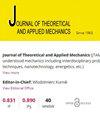一种避免五轴加工奇异性的刀具方向平滑方法
IF 1
4区 工程技术
Q4 MECHANICS
引用次数: 1
摘要
在航空发动机叶片的数控磨削中,由于奇异区引起的转轴剧烈变化会大大降低磨削精度和磨削质量。本文以B轴和C轴两轴四列机床为例,提出了一种将C轴转角优化、刀具姿态修正和刀具位置调整相结合的刀具轨迹优化算法。利用VERICUT软件对该算法进行了验证,并在加工实验中有效地减小了旋转轴在奇异区域的旋转幅值,保证了叶片的磨削质量。本文章由计算机程序翻译,如有差异,请以英文原文为准。
A tool orientation smoothing method for five-axis machining to avoid singularity problems
In numerically controlled grinding of aeroengine blades, a sharp change in a rotating shaft caused by a singular zone greatly reduces grinding precision and quality. This paper proposes an algorithm to optimize the tool-path that combines optimization of the C -axis rotation angle, a modification to the tool orientation and adjustments to the tool position by taking a four-array machine tool with two rotational axes ( B -axis and C -axis) as an example. The algorithm was verified using VERICUT software, furthermore, in machining experiments, the rotation amplitudes of the rotary axis in singular areas was effectively reduced, which ensured grinding quality of blades.
求助全文
通过发布文献求助,成功后即可免费获取论文全文。
去求助
来源期刊
CiteScore
1.40
自引率
14.30%
发文量
22
审稿时长
6 months
期刊介绍:
The scope of JTAM contains:
- solid mechanics
- fluid mechanics
- fluid structures interactions
- stability and vibrations systems
- robotic and control systems
- mechanics of materials
- dynamics of machines, vehicles and flying structures
- inteligent systems
- nanomechanics
- biomechanics
- computational mechanics

 求助内容:
求助内容: 应助结果提醒方式:
应助结果提醒方式:


